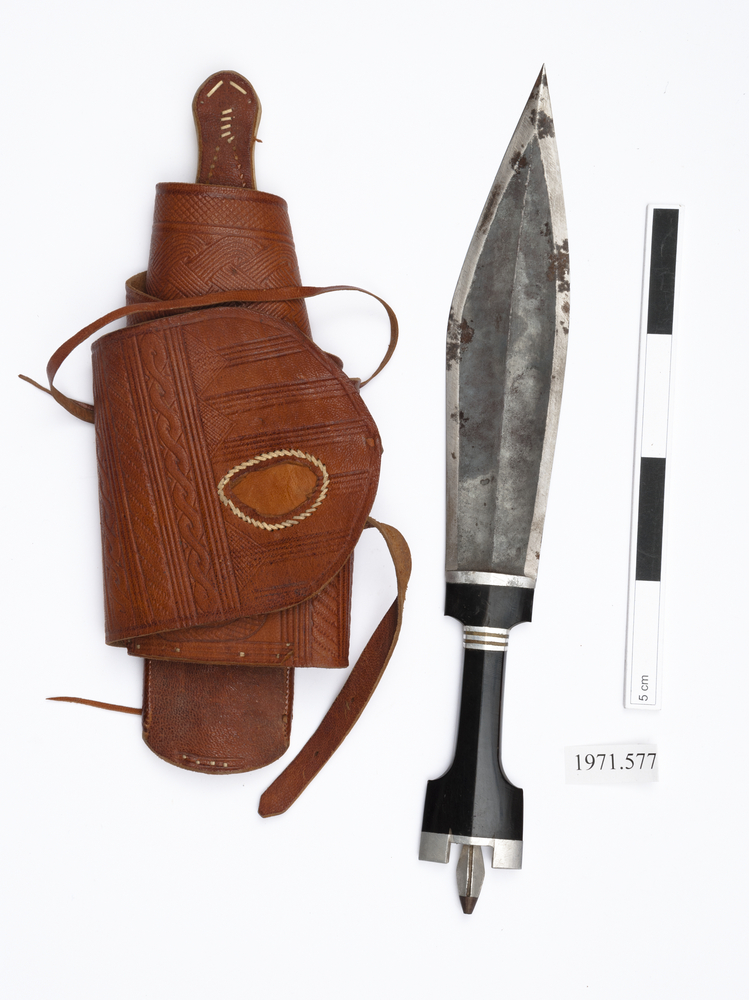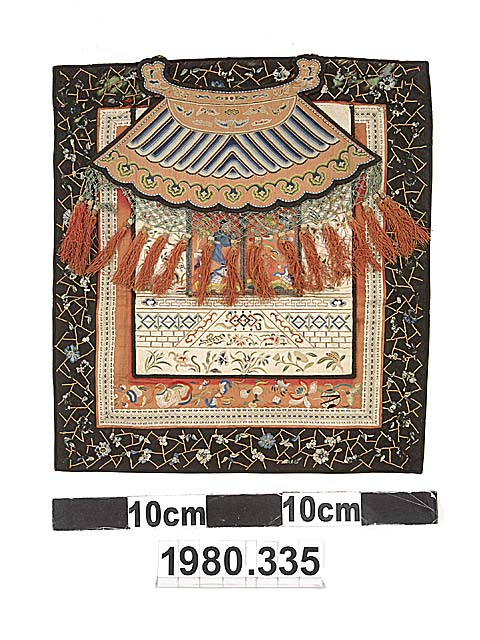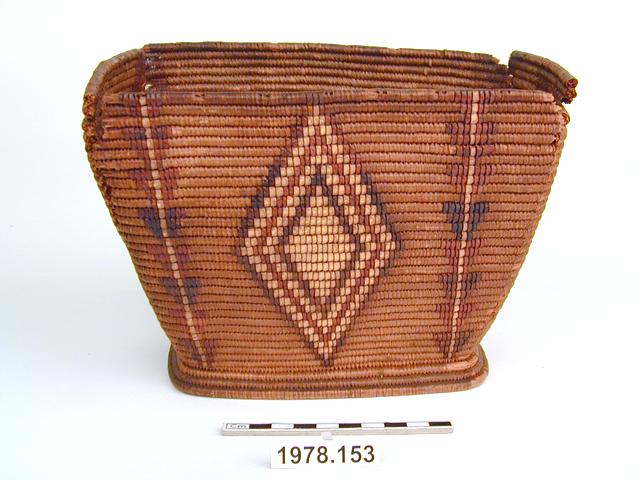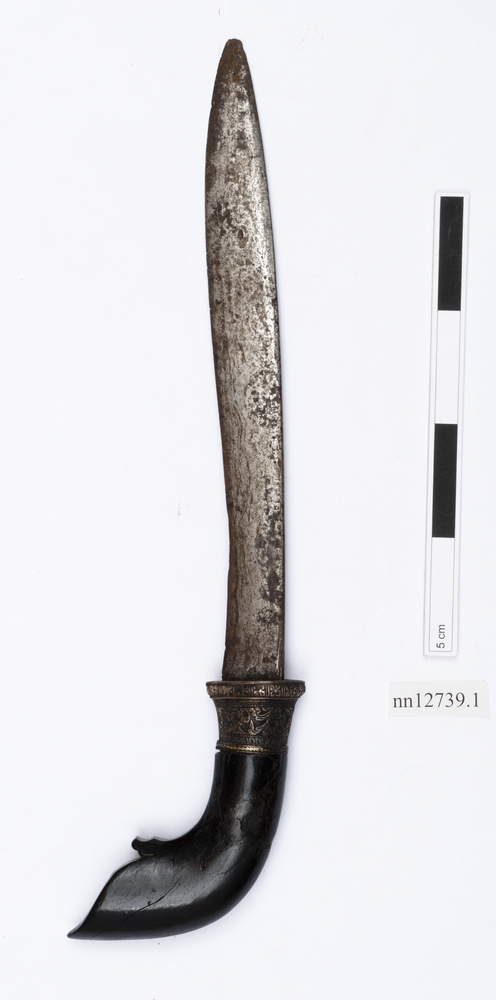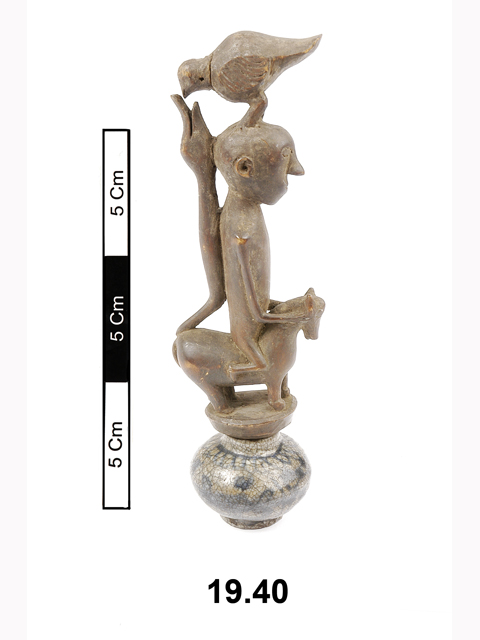
Medicine container, perminaken, consisting of a Chinese ceramic jarlet, made in Fujian province, with a carved wooden stopper locally made in Sumatra. The jarlet is of depressed globular form with short neck tapered slightly towards the mouth rim. It stands on a low foot with a slightly recessed base. The body is fine white porcelain painted with cobalt blue pigment under crackled, clear glaze; base unglazed but painted with brown wash. The bulging body is decorated with floral sprays in two medallions, alternated with fishscale patterning. Around the neck is a band of overlapping petals. The stopper is carved wood, depicting a horse and rider; a snake extends from the rear of the horse up the rider's back, and a bird is perched on the top of the rider's head.
Jarlets such as this were made in Fujian province in China and used as containers for oil and ointments exported to Southeast Asia. When emptied, they were used in the upland parts of northern Sumatra as containers for magic potions such as pupuk, a concoction said to have powerful properties which would be used by a local priest for a variety of purposes. See Achim Sibeth, 1991, 'The Batak', Thames and Hudson figs. 176 - 179.These jarlets usually had locally made carved wooden stoppers.



